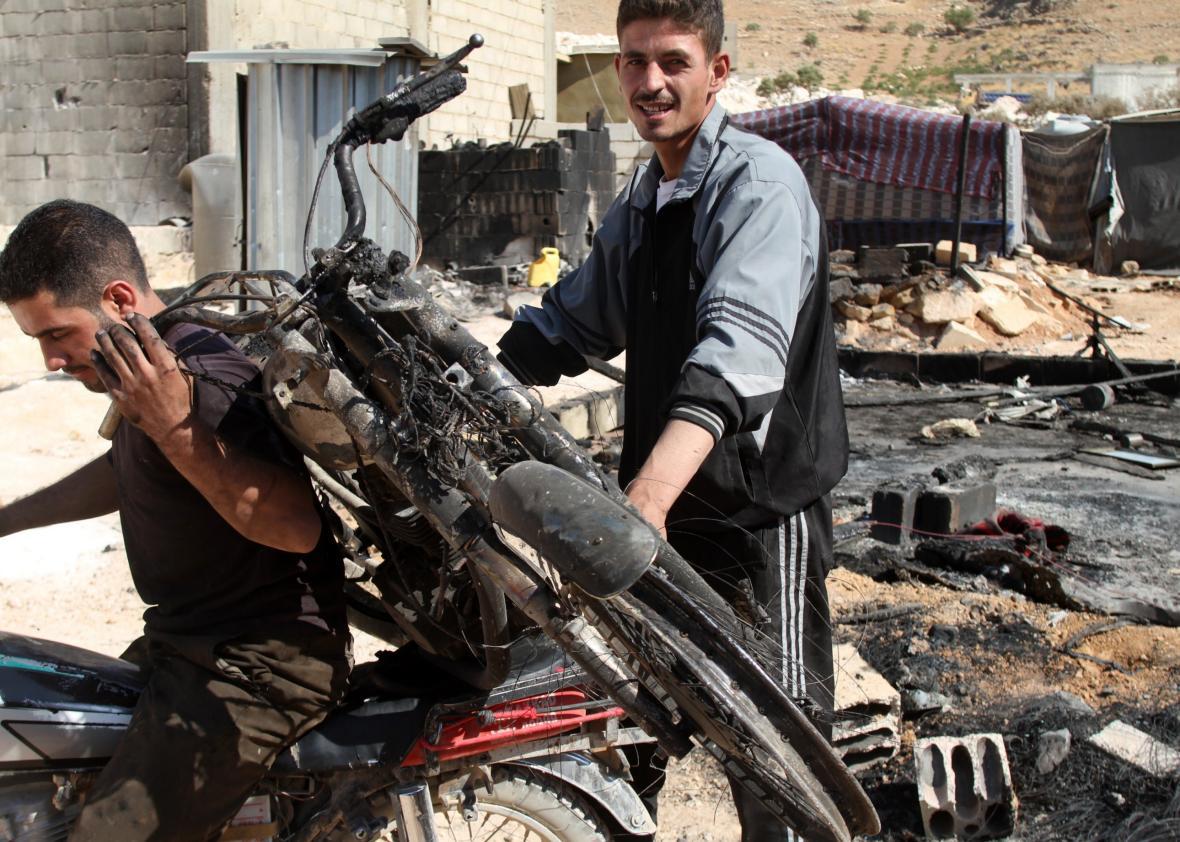While it’s bogus for Donald Trump to say that Syrian refugees can’t be trusted because most of them seem to be “strong, powerful, men”—when it comes to refugees entering the U.S., the gender breakdown is pretty even—in Europe, it is true that young men are disproportionately represented in the overall refugee population. This was cause for some concern in European countries, even before the recent wave of sexual assaults in Germany, many of which were allegedly perpetrated by asylum seekers.
A new report from the International Rescue Committee looks at some of the factors that may be pushing refugee men to leave the Middle East in greater numbers. The IRC’s survey examines conditions in refugee camps in Lebanon, home to more than 1 million refugees from the Syrian conflict, and finds that men are often falling through the cracks of the humanitarian aid system. Fifty-three percent of the unmarried and separated men surveyed were not even registered with the U.N. High Commissioner for Refugees, cutting them off from many of the benefits, including food aid, that they’re entitled to. A third of those not registered believed, mistakenly, that they were not entitled to benefits as single men. Fewer than 1 in 10 had received any benefits in the past 30 days, far lower than comparable surveys for families.
Because of their perceived threat, men are far more likely to be targeted in raids by law enforcement and stopped at police checkpoints. “I am afraid to cross checkpoints because I tried once and I was detained for a week, insulted and beaten. I would rather die than cross any checkpoint and risk detention,” one 23-year-old refugee man living near the town of Arsal told the surveyors. Refugee men often struggle to find work in Lebanon, and 1 in 5 reported some type of workplace exploitation or abuse.
The authors of the survey are quick to point out that it is “not an argument for reducing focus on any one demographic cohort in favor of another.” Female refugees and children face their own set of unique risks and challenges. But in humanitarian relief efforts, men are “commonly regarded as the demographic cohort best able to self-protect, self-sustain and negotiate the complexities of displacement unaided,” the report states. “As a result, their vulnerabilities are rarely specifically assessed or acknowledged.” The report suggests that both host country governments and NGOs often assume men will be able to fend for themselves. But given the lack of opportunities and threats they face in countries like Lebanon, they often seem to help themselves by leaving.
They are unlikely to find Western countries all that more accommodating. Even some of the most welcoming governments have been wary about taking in single male refugees. Unmarried Syrian men are not eligible for the otherwise generous resettlement program set up by Justin Trudeau’s Canadian government, for instance. But given that these men perceive little opportunity in the Middle East and have less tying them down than women or men with families, they may decide that Europe is worth a shot.
The other choice, of course, is heading back home. The last thing any government should want is more young, disaffected men returning to the battlefield in Syria and Iraq. This is a population the world can’t afford to leave stranded.
